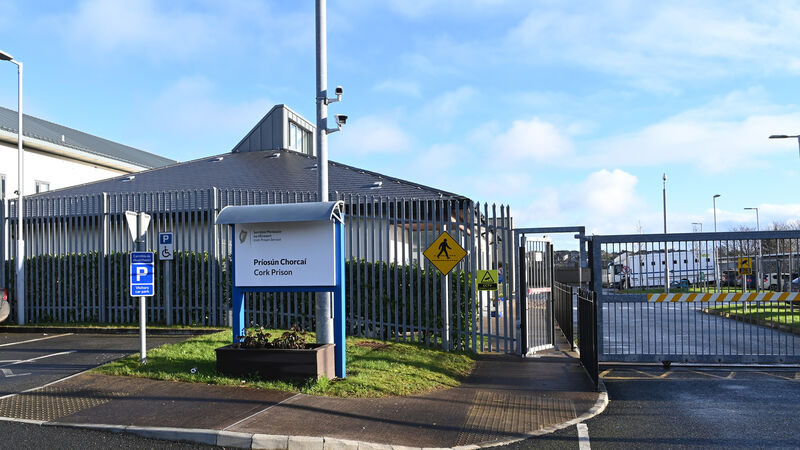Gardaí believe notorious west of Ireland drug gang is behind importation of deadly synthetic opioids

Prison authorities suspected at least two deaths are linked to the synthetic opioid nitazenes, one in Cork Prison last March and another in Mountjoy Prison in July. File picture: Dan Linehan
Gardaí believe a notorious west of Ireland drug gang is behind the importation of deadly synthetic opioids into the country.
Gardaí have set up a dedicated operation to combat the network's activities and limit the supply of synthetic opioids in Ireland.
There are fears that more synthetic opioids, and other synthetic drugs, will appear on the European market, including Ireland, within the next year as heroin stocks continue to be used up.
Synthetic opioids, including nitazene, have sparked a number of health “red alerts” in Ireland after mass overdoses in different parts of the country, both in the community and in prisons.
A number of deaths have been linked to the outbreaks, but health authorities are awaiting formal inquests for confirmation.
Prison authorities suspected at least two deaths are linked to nitazenes, one in Cork Prison last March and another in Mountjoy Prison in July.
Sources have also reported deaths in the community, including in Cork, Dublin and Limerick.
A violent gang controlling much of the drug trade across the west has been identified by gardaí as behind efforts to bring synthetic opioids into the country and create a market.
The gang has direct connections in foreign markets and has sourced the drug - which is made in China - through international associates.
While this gang is supplying synthetic opioids at a national level, local networks are distributing it in different parts of the country.
The gang has been a long-term target of both the Garda National Drugs and Organised Crime Bureau and the Criminal Assets Bureau.
Nitazenes are up to 25 times more potent than fentanyl, the synthetic opioid which has devastated the US.
Nitazenes emerged in Dublin last November where, in a matter of days, an unprecedented number of overdoses were reported.
The drug, in powder form, was being sold as heroin.
A total of 57 overdoses linked to the drug were recorded.
Last December 20 overdoses linked to the drug, in powder form, were recorded in Cork.
A HSE-led team was able to get alerts out quickly in both cases and organize a rapid-response system with emergency services, homeless providers, drug agencies, hospitals and laboratories.
The administration of naloxone, an antidote for heroin, was used against nitazene and worked, although, in some cases, multiple doses had to be given.
In June, there was another outbreak affecting Limerick, Clare, Galway and Dublin with the nitazene found in tablet form, sparking fears that a broader market of unsuspecting users could end up taking it.
In July, there were overdoses in Mountjoy Prison, again in tablet form.
Earlier this month, 11 prisoners in Portlaoise Prison were hospitalized after overdosing on what was initially thought to be nitazene, but was identified in tests as clobromazolam – a synthetic benzodiazepine never documented in Ireland before.
Gardaí and the HSE are bracing themselves for a further expansion this year in the supply of synthetic opioids and benzodiazepines.
Last May, the HSE-led group called on the Government to give political priority and greater resources to prepare for this.
Sources say the country’s biggest heroin trafficking gang, based in Ballyfermot, Dublin, has not - as of yet - branched into the synthetic opioid trade, but warn that that could change.
The feared surge in synthetic opioids is being linked to a dramatic collapse in the manufacture of opium in Afghanistan, from where the vast bulk of heroin in Europe comes from.
In a report last June, the UN said opium production fell by 95% in Afghanistan in 2023 as a result of a Taliban ban in 2022.









